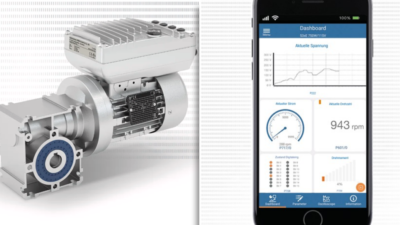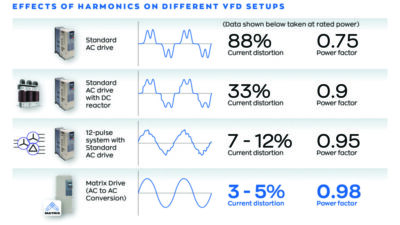When Moore Tool set out to build a five-axis, high-speed machining center for use in the production of critical components in the turbo machinery, mold and die, scroll compressor, and medical markets, the challenge was to ensure the machines could provide high-speed machining capability with milling materials ranging from aluminum to hardened steel and titanium.
AT A GLANCE
CNC flexibility
Mechatronics analysis
Design optimization
When Moore Tool set out to build a five-axis, high-speed machining center for use in the production of critical components in the turbo machinery, mold and die, scroll compressor, and medical markets, the challenge was to ensure the machines could provide high-speed machining capability with milling materials ranging from aluminum to hardened steel and titanium.
To meet these requirements, Moore Tool’s design for its Five-Sided Precision (FSP) line of machining centers included high-speed (up to 40,000 rpm) cutting capability, dynamic response, superior stability and vibration damping, automation adaptability, Microsoft Windows working environment, onboard cooling, substantial onboard memory in a CNC without external devices for downloading complex programs, and high-precision.
Moore Tool took a bottom-up approach in developing the FSP line, reviewing all cutting parameters of the line’s prime markets. Speed and accuracy were considered carefully when evaluating raw material properties, along with the varying requirements of production and part accuracy. These were key steps in the process because the requirements of machining aluminum and titanium with high production rates can differ when compared to the intricate contours and features of mold components produced directly in hardened steel.
Machine configuration, as it relates to the position and configuration of the rotary tables and spindle, are critical to the high production and precision needs of Moore’s customers.
The FSP300X five-axis machine, which Moore Tool considers the showcase product in the FSP line, features up to 1.7-G acceleration in five-axis mode, 24- and 44-position tool changers with laser toolsetter, precision spindle with HSK40E taper, Siemens Sinumerik 840D CNC, and Siemens SimoDrive 611D drive packages. It handles the particular market needs for precision component manufacture in a high-production environment and can perform highly complex operations on one-off runs cost competitively.
During FSP300 development, Siemens performed a detailed dynamic analysis of the complete machine, control, and servo drive system through its mechatronics support service. Data gathered during the mechatronics process is used to optimize the machine concept, allowing the machine builder to push designs to performance limits with predictable accuracy and part-finish results.
For complex blade contour and finishing operations, the Sinumerik 840D CNC’s CompCAD aerospace-specific software can smooth point-to-point programming of the control’s compressor function. This control capability is key when processing a part using NURBS (non-rational uniform B-splines), which takes the machine to its most advanced level of smooth contouring and chatter elimination. This is achieved by using splines in an axis-specific tolerance window. As a result, contour violations are avoided and the efficiency of acceleration/deceleration curves is increased, while slowdowns/speed-ups at block transitions are eliminated—critical factors in the machining of aerospace surfaces.
Options in the Moore Tool FSP line include high-frequency spindle options up to 80,000 rpm; a variety of robotic part loaders with control parameters incorporated onto the host CNC; a graphite-machining package; laser toolsetter with measurement and compensation standards; and custom configurations.
For similar products, see www.siemens.com/cnc and www.cesuppliersearch.com .
Author Information
Ed Lockwood is product manager at Moore Tool;



